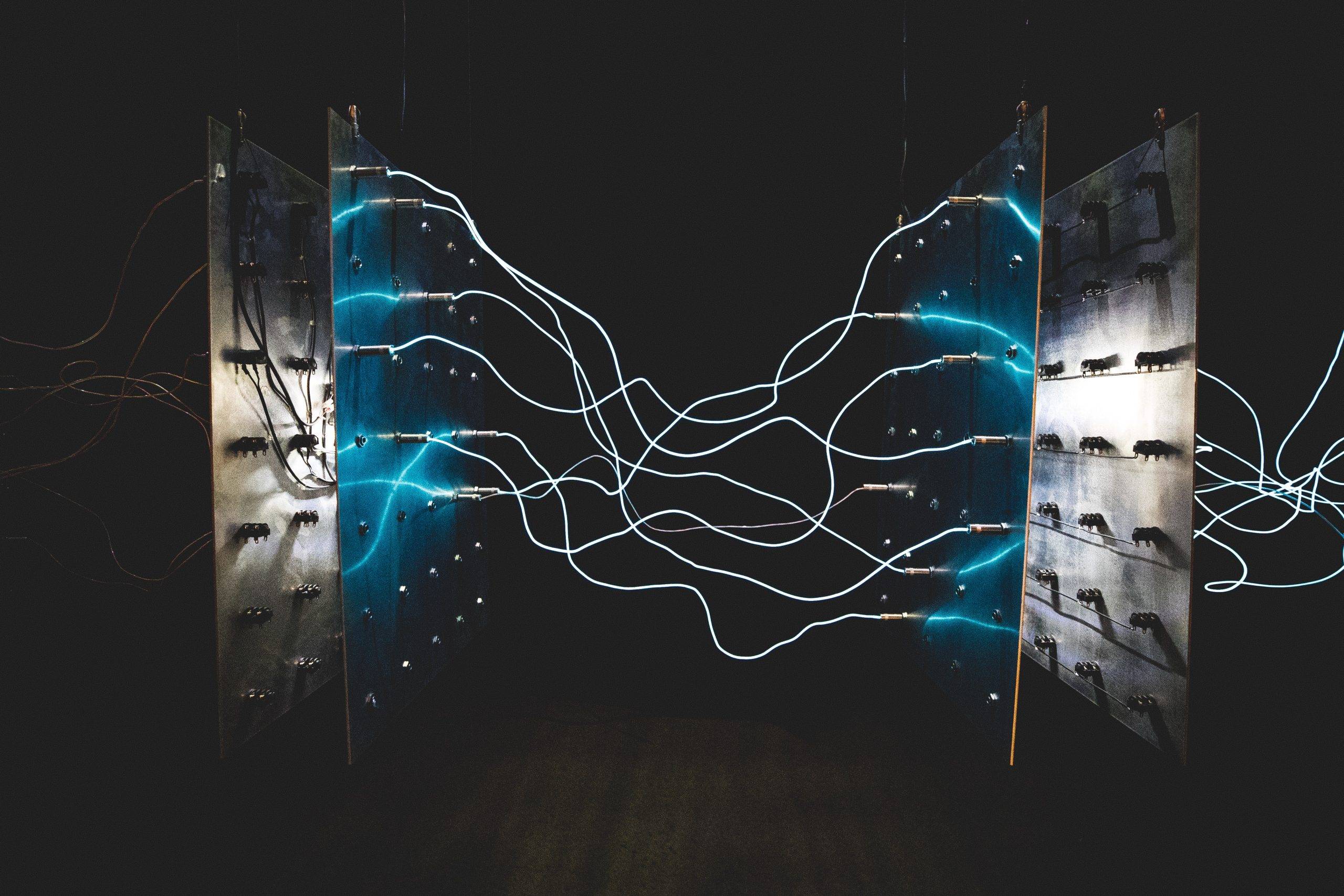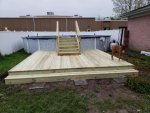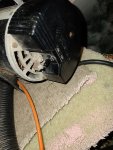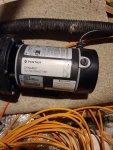So I had an above ground pool put in 2 years ago and I am just now finding out about sacrificial anodes. So I ordered one that I plan to put in pvc before the salt cell on the return side. While looking into this I'm realizing my pool is not bonded. I figured I would do this as well but the only way I see to do this is dig a trench around the pool attaching in four places etc. My problem is I already have a deck in place which is very low to the ground so I can't climb underneath it. Also the boards are placed long way so I can't just take a few boards out. Is there any other way to bond it or will I be ok just skipping the bond and just attaching anode to the ground?
Bonding problem Above ground
- Thread starter Tcrum
- Start date
You are using an out of date browser. It may not display this or other websites correctly.
You should upgrade or use an alternative browser.
You should upgrade or use an alternative browser.
RDspaguy
In The Industry
Pretty sure bonding is not an issue above ground, but if you want it, simply bond to the metal pool frame and let it be your bonding conductor.
- Jul 21, 2013
- 65,116
- Pool Size
- 35000
- Surface
- Plaster
- Chlorine
- Salt Water Generator
- SWG Type
- Pentair Intellichlor IC-60
If your AGP is more then 42” it is considered a permanent pool and must have some bonding. These two threads cover the requirements...
 www.troublefreepool.com
www.troublefreepool.com
 www.troublefreepool.com
www.troublefreepool.com
Bonding Above Ground Pool - Trying to understand
I had my 24' above ground pool installed last summer. It was not bonded at the time. This year my goal is to bond the pool, but I am having a hard time wrapping my head around how to attach the bonding lugs to the legs/posts of the pool. My pool has steel supports with resin tracks and cap. So...
Bonding Issues for Above Ground Pool
So, our Sharkline Matrix above ground pool (24' x 54") is all up and filled with water. The pool is has all resin parts, but steel walls, so, it looks like it needs to be bonded at four points around the pool. Trouble is... when setting up the pool, there is only ONE spot in the pool to attach...
When you say "some" bonding are you saying I don't necessarily have to do the ring around the pool? What I'm asking is if I have my pump, salt cell control box, and a sacrificial anode placed in the water flow bonded together and grounded, will that provide some level of protection? Or is it a situation where with out the copper ring around the pool and 4 attachment points its useless? Or this is probably stupid but can I take the copper bond around my deck? If I did this then it wouldn't be equal distances in all areas so would that not work or actually cause more harm than good?
- Jul 21, 2013
- 65,116
- Pool Size
- 35000
- Surface
- Plaster
- Chlorine
- Salt Water Generator
- SWG Type
- Pentair Intellichlor IC-60
When you say "some" bonding are you saying I don't necessarily have to do the ring around the pool?
If your pool is 42" of water or higher then you must have a complete bonding loop. That is 8 AWG bare solid copper bonding conductor secured in or under the deck or unpaved surface within 4 in. to 6 in. below the subgrade and must be located between 18 in. and 24 in. from the inside walls of the pool with minimum four (4) points uniformly spaced around the perimeter of the pool connected to the bonding loop and bonded to the water .
The NEC does make note that not all pool shells/frames can be bonded because they are either plastic or fiberglass.
What I'm asking is if I have my pump, salt cell control box, and a sacrificial anode placed in the water flow bonded together and grounded, will that provide some level of protection?
Nope. Bonding is to ensure the pool water, deck and equipment are all equi-potential. That can only be achieved if all are connected together.
Or is it a situation where with out the copper ring around the pool and 4 attachment points its useless?
It does not provide the electrical shock protection that a bonding loop should.
Or this is probably stupid but can I take the copper bond around my deck? If I did this then it wouldn't be equal distances in all areas so would that not work or actually cause more harm than good?
No. See above.
For more read...

Bonding vs Grounding
Electricity and water don't mix. Learn a few basic tips how to keep your family safe when dealing with electricity around your pool.
Electrical Bonding - Further Reading
I know I'm being a pain about this. You guys have explained in great detail how to correctly bond a pool and I thank you and appreciate it. What I am looking for i guess is a "right" wrong way to this. I'll post a picture of my pool so you can see what I'm talking about but what I'm proposing whichIf your pool is 42" of water or higher then you must have a complete bonding loop. That is 8 AWG bare solid copper bonding conductor secured in or under the deck or unpaved surface within 4 in. to 6 in. below the subgrade and must be located between 18 in. and 24 in. from the inside walls of the pool with minimum four (4) points uniformly spaced around the perimeter of the pool connected to the bonding loop and bonded to the water .
The NEC does make note that not all pool shells/frames can be bonded because they are either plastic or fiberglass.
Nope. Bonding is to ensure the pool water, deck and equipment are all equi-potential. That can only be achieved if all are connected together.
It does not provide the electrical shock protection that a bonding loop should.
No. See above.
For more read...

Bonding vs Grounding
Electricity and water don't mix. Learn a few basic tips how to keep your family safe when dealing with electricity around your pool.www.troublefreepool.com
Electrical Bonding - Further Reading
www.troublefreepool.com
i understand is not the absolute correct way to do this, but I wanna throw 3 different options out there. 1. Bury the wire around the pool but when I get to the deck run the wire underneath with out burying it. Keep in mind this is a small deck so all but like 12 ft of wire would be buried. 2. The deck being small i could hit 4 contact points equal distanced without doing a full circle so more of a u shape with that 12 ft of the deck being the top of the u. 3. Bury the wire around the pool hitting all contact points but also burying the wire around the deck which would mess up the perfect circle but should still be the same basic idea.
Knowing that proper bonding depends on the wire being an equal distance in order to equally spread out a rogue electrical charge the first option seems the best to me but I don't know how big a problem 12 ft of the bonding wire not being buried would be. Again I know the correct way but I'm looking for the most acceptable work around this deck would be because it's to low to crawl under and the way the boards were laid I'd basically have to take it completely apart.
Attachments
- Jul 21, 2013
- 65,116
- Pool Size
- 35000
- Surface
- Plaster
- Chlorine
- Salt Water Generator
- SWG Type
- Pentair Intellichlor IC-60
Does your pool need to pass review by a code inspector?
The loop around the pool is more important is more important then perfect equidistant connections. I would think you can snake the wire under the deck to complete the loop.
If your pool needs to pass inspection then you need to find out what is acceptable to him.
The loop around the pool is more important is more important then perfect equidistant connections. I would think you can snake the wire under the deck to complete the loop.
If your pool needs to pass inspection then you need to find out what is acceptable to him.
No my town is really relaxed on above ground pool laws apparently. I didn't need any kind of permit or anything and I see many pools in town with no fence around them even. Which I thought would be a basic thing required. I'm just wanting to bond my pool purely for my own well being and to make sure the sacrificial anode can do its job efficiently. I've already been running a salt water pool with steel walls for 2 years with no anode beside the one you toss in the basket that I'm now hearing is useless. Thanks for your input I agree and will probably run it under the deck. Any thoughts on bonding screws? I've seen 2 different ways on YouTube. The first just a self tapping bonding screw towards the bottom of the support covers. The 2nd way is drilling a hole and fishing a bolt down and securing with a lug on the outside. I'm assuming the 2nd way is for passing inspections. It seems like alot of trouble to accomplish basically the same thing or is their another reason for this? I should have done all of this before building the deck but I trusted the pool company to hold my hand a bit more than they did. They've actually been pretty useless to the point that I avoid contacting them unless I have to. So I'm kind of working backwards on a lot of this.
- Jul 21, 2013
- 65,116
- Pool Size
- 35000
- Surface
- Plaster
- Chlorine
- Salt Water Generator
- SWG Type
- Pentair Intellichlor IC-60
The first just a self tapping bonding screw towards the bottom of the support covers. The 2nd way is drilling a hole and fishing a bolt down and securing with a lug on the outside. I'm assuming the 2nd way is for passing inspections. It seems like alot of trouble to accomplish basically the same thing or is their another reason for this?
The first way provides a more solid electrical contact for the bonding wire. If you have a bolt through a hole it does not mean it has a good low resistance electrical contact. Without good electrical contact all you are looking to achieve will be for naught.
Make sure any holes you make are properly protected from rust and corrosion while maintaining the electrical connection.
I'm trying to bond my pool and from everything I've seen there should be a bonding lug on top of the motor separate from the grounding lug behind the switch. Can the bond be shared with the ground or am I supposed to somehow add a lug am I somehow missing where this connection should be made?
Attachments
The lug you can see in the first picture is the bonding lug.
The ground screw is under the cover and it is green.
The ground screw is under the cover and it is green.
I
I'm not saying you're wrong but I believe at one point that screw was green. Its a couple years old and that is what the pool company used to ground it to a ground rod. They are not the best pool company so its not out of the question they did it wrong. But what you're saying is I use that to bond it and I should be able to take the cover off and find a different to attach to the ground? Does the ground then come out of that plastic cap on the top?The lug you can see in the first picture is the bonding lug.
The ground screw is under the cover and it is green.
The lug you can see is the bonding lug.
That's where you connect the bond wire.
There should be 3 wires inside the power cord going under the cover. The power wires connect to L1 and L2. The green ground wire connects to the green ground screw under the cover.
You do not connect the pump to a ground rod.
That's where you connect the bond wire.
There should be 3 wires inside the power cord going under the cover. The power wires connect to L1 and L2. The green ground wire connects to the green ground screw under the cover.
You do not connect the pump to a ground rod.
Ok thanks I have been getting really confused with the relationship between bonding and grounding. And I get that a 3 pronged plug obviously has a ground but I thought there had to be a separate ground. So does anything get connected to a ground rod and if no why did the pool company put it there? The set up the way they had it was the pump and salt cell control box shared one copper wire that ran to a ground rod. The control box has a blueish colored screw clamp for its connection and it was ran to that lug behind the switch on the pump and to the ground rod. There was no bonding at all. So are you saying I don't need the ground rod at all? Keep in mind this is an aboveground without dedicated electric ran to it. I have a 10 gauge outdoor extension cord ran to the salt cell and the pump plugs into the cell box. I have watched countless YouTube videos and Google searches but have not been able to clear this up.
- Jul 21, 2013
- 65,116
- Pool Size
- 35000
- Surface
- Plaster
- Chlorine
- Salt Water Generator
- SWG Type
- Pentair Intellichlor IC-60
What bonding you need around your AGP depends on if water is above 42' and if the pool shells/frames cannot be bonded because they are either plastic or fiberglass.
So far what is described is correct with the pump and salt cell control box shared one copper wire that ran to a ground rod. It is not clear if that ground rod is really connected to a bonding loop around the pool and bonded to the water.
For more information you can read...

 www.troublefreepool.com
www.troublefreepool.com
 www.troublefreepool.com
www.troublefreepool.com
So far what is described is correct with the pump and salt cell control box shared one copper wire that ran to a ground rod. It is not clear if that ground rod is really connected to a bonding loop around the pool and bonded to the water.
For more information you can read...

Bonding vs Grounding
Electricity and water don't mix. Learn a few basic tips how to keep your family safe when dealing with electricity around your pool.
Electrical Bonding - Further Reading
It sounds like you have multiple issues with improper installation.
I would recommend that you contact a qualified electrician to review your electrical and advise you about getting it up to code.
I would recommend that you contact a qualified electrician to review your electrical and advise you about getting it up to code.
Haha no I think you answered some of my questions the other day I had about bonding wire under my deck. I'm going to be adding the bonding wire. From what I've seen most people make the loop around the pool connected in four spots of the pool metal covers. Then connect to any electrical stuff like pool heater or lights which I do not have. So I assumed the salt cell box and the inline sacrificial anode, which I will also count for my water bond, would be connected to the bonding wire and ends at the pump. All videos I watch show a bonding lug on top of the pump motor that this final connection is made. Then the videos don't really say anything about grounding. So I just thought that the lug I had behind my switch was then connected to the ground rod kinda grounding the whole system. And I was just missing this 2nd lug used for bonding on top of the pump.What bonding you need around your AGP depends on if water is above 42' and if the pool shells/frames cannot be bonded because they are either plastic or fiberglass.
So far what is described is correct with the pump and salt cell control box shared one copper wire that ran to a ground rod. It is not clear if that ground rod is really connected to a bonding loop around the pool and bonded to the water.
For more information you can read...

Bonding vs Grounding
Electricity and water don't mix. Learn a few basic tips how to keep your family safe when dealing with electricity around your pool.www.troublefreepool.com
Electrical Bonding - Further Reading
www.troublefreepool.com
Thread Status
Hello , This thread has been inactive for over 60 days. New postings here are unlikely to be seen or responded to by other members. For better visibility, consider Starting A New Thread.




